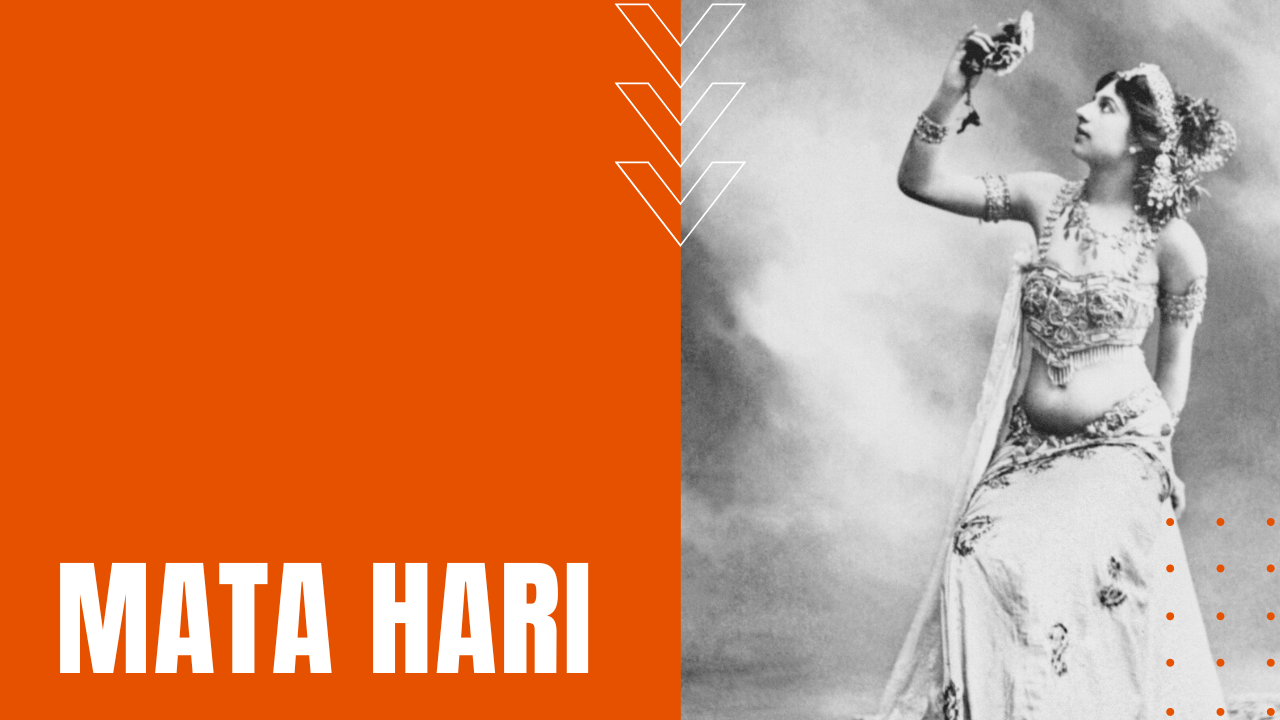Mata Hari: Exotic Dancing, Espionage, and Death Sentence

Born Margaretha Geertruida Zelle in 1876 Leeuwarden Holland, after living on the island of Java as a mail-order bride to Scottish-born Dutch army officer John MacLeod—a relationship that proved abusive for the future Mata Hari, Margaretha poured herself into the study of Javanese culture and dance.
Mata Hari’s Dance Career
After her divorce from her alcoholic husband, by 1905, her fame as an exotic dancer spread throughout Europe, informing audiences that she was born a Javanese princess, where she was given the name Mata Hari, or “eye of the day,” in the Malay language.
Coat tailing on early 20th century modern dance standouts like Isadora Duncan and Ruth St. Denis, Mata Hari’s Asia-inspired interpretations packed dance halls and opera houses from France to Russia, mainly due to the fact that her performances eventually morphed into a strip show.
Promiscuous, flirtatious and openly flaunting her body, Mata Hari brought a carefree, provocative style to stages throughout Europe, leading one French journalist to write that Mata Hari was “so feline, extremely feminine, majestically tragic, the thousand curves and movements of her body trembling in a thousand rhythms.”
Courting and Spying
She also became a quite infamous courtesan, cavorting with wealthy men and high society alike, and after the outbreak of World War One, her stable of lovers expanded to include high-ranking military officers of an assortment of nationalities.
In February of 1917, as France struggled with war fatigue and high losses on European battlefields, French authorities arrested Mata Hari on trumped-up charges of espionage for the German government, even though France had paid her one million Francs to seduce Prussian Crown Prince Wilhelm, the eldest son of Kaiser Wilhelm the 2nd.
Mata Hari Sentenced to Death
Accused of sharing details of the Allies’ newly-developed battle tank, which, according to prosecutors, resulted in the deaths of thousands of Allied soldiers, during her widely publicized trial, she proclaimed “a harlot? Yes, but a traitoress, never!”
She was convicted of spying for Germany and sentenced to death, and on October 15th at Vincennes France, she was brought before a firing squad of 12 French soldiers, refusing a blindfold as she defiantly blew a kiss to her executioners.
After shots rang out, one eyewitness reported that “Slowly, inertly, she settled to her knees, her head up always, and without the slightest change of expression on her face. For the fraction of a second it seemed she tottered there, on her knees, gazing directly at those who had taken her life. Then she fell backward, bending at the waist, with her legs doubled up beneath her,” ending Mata Hari’s life at the still-tender age of 41.
